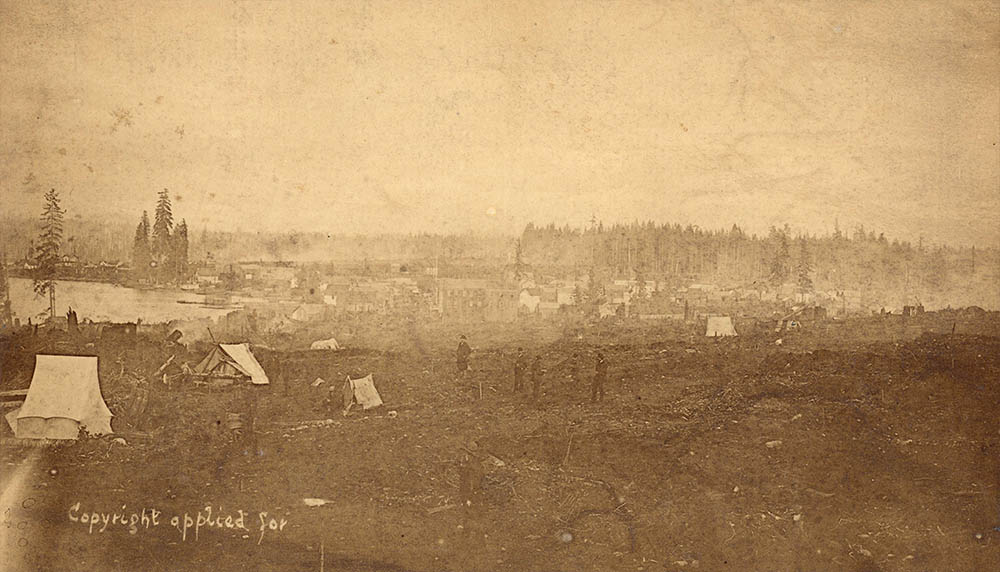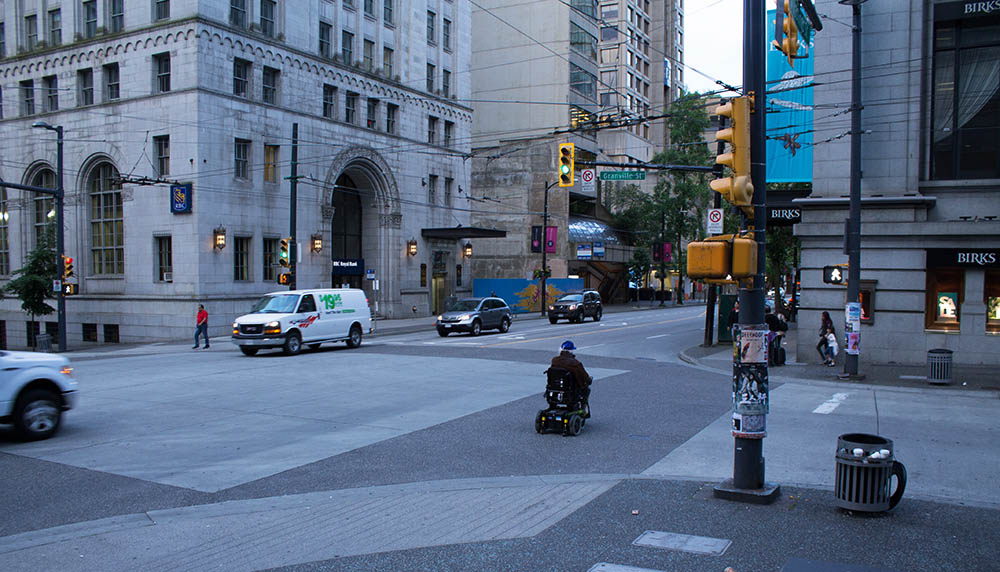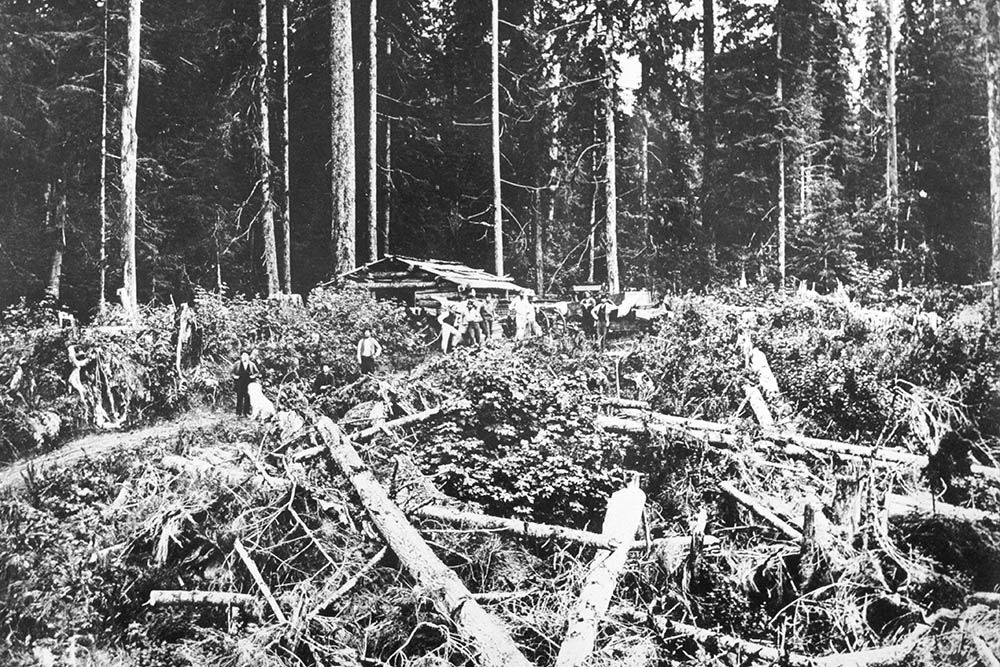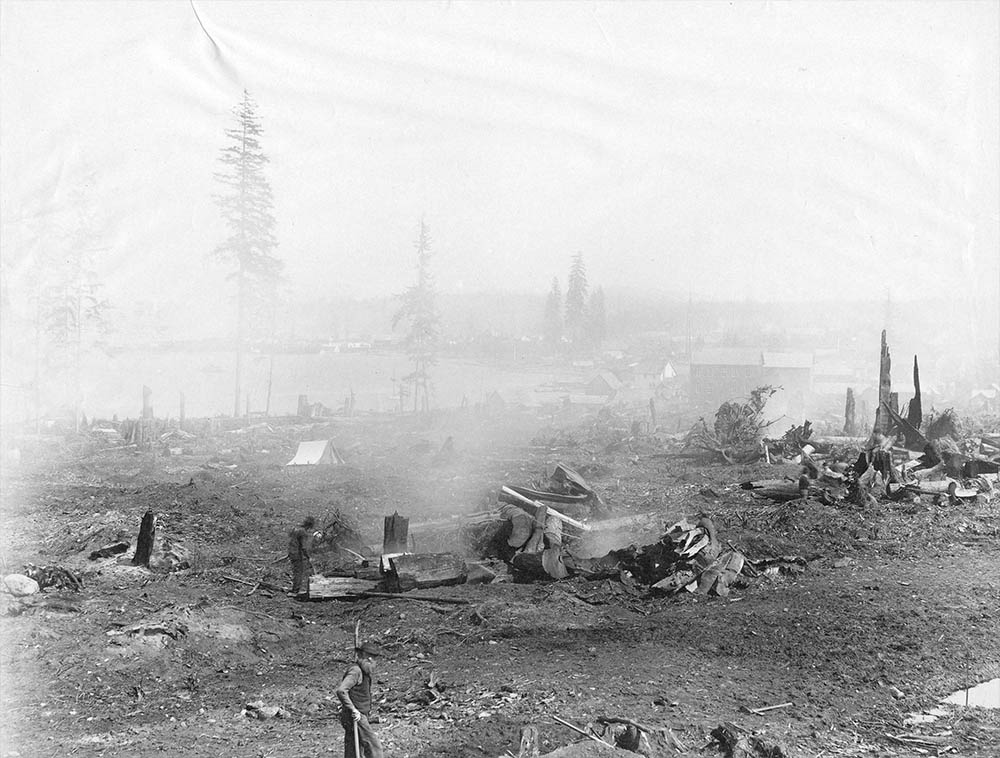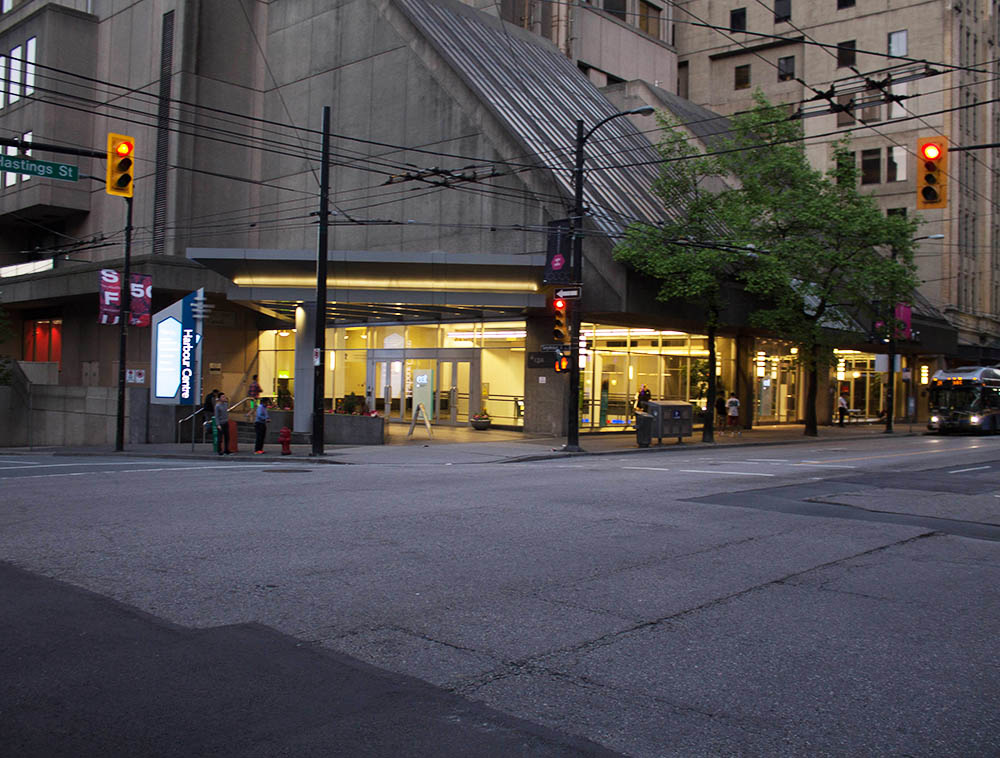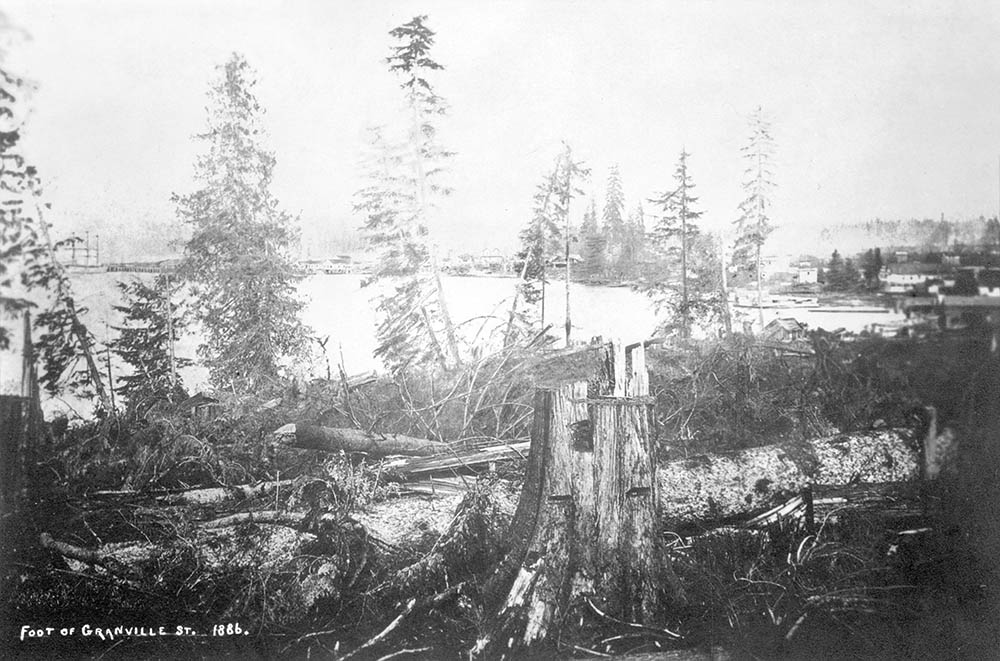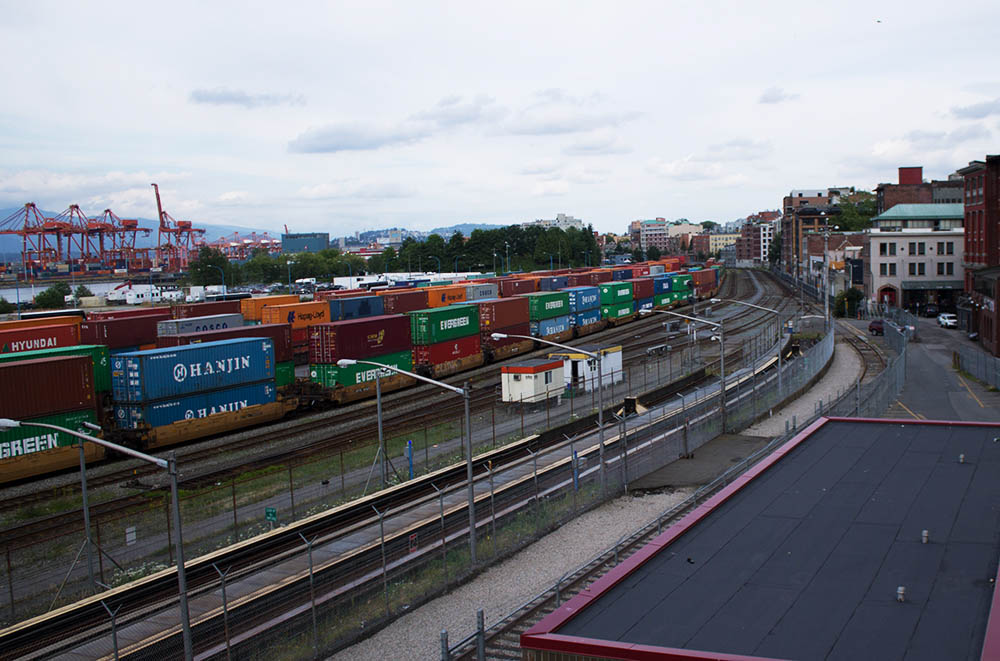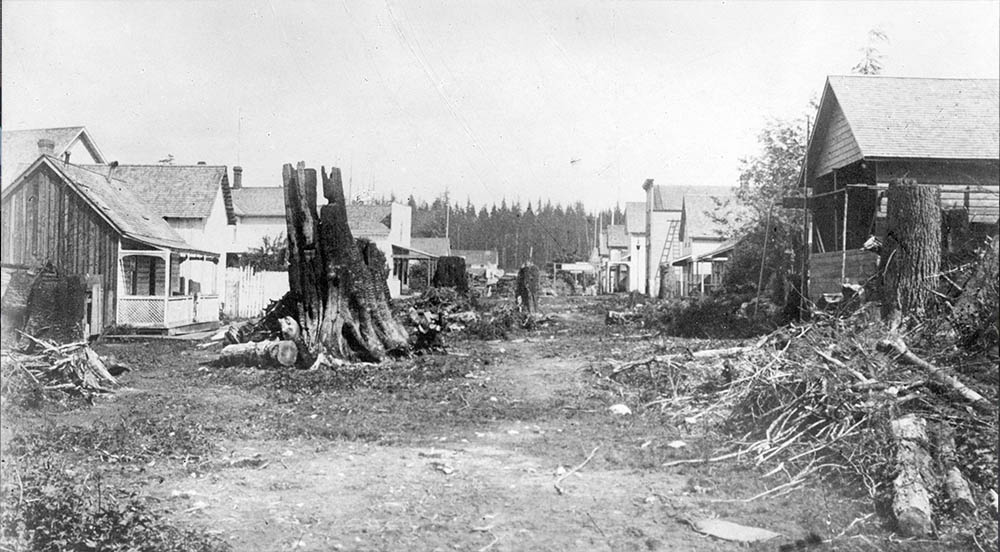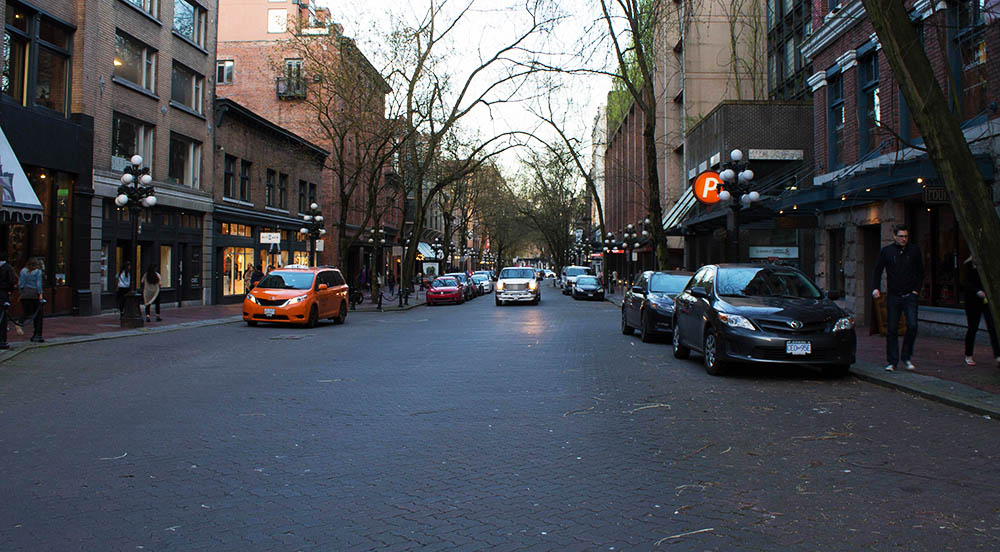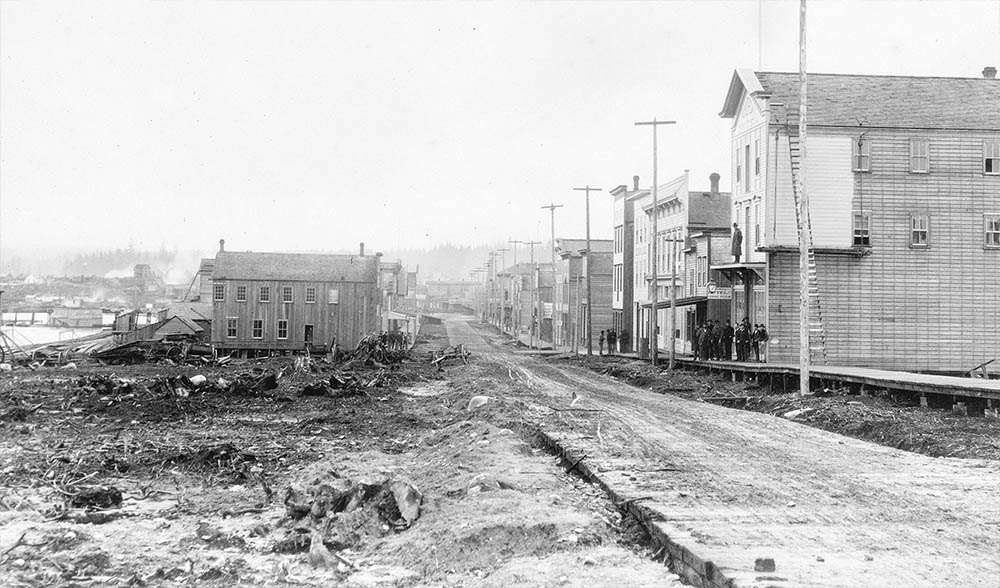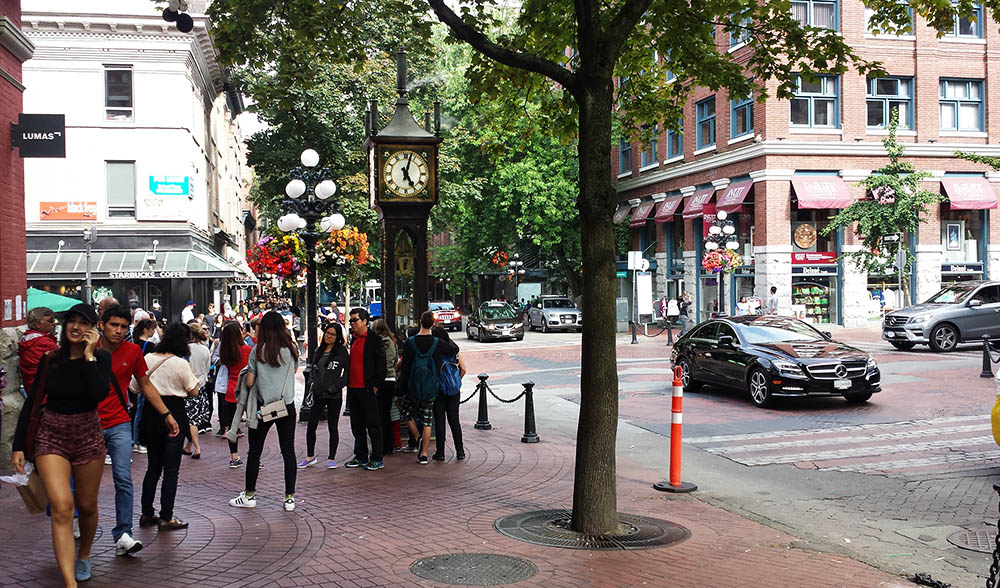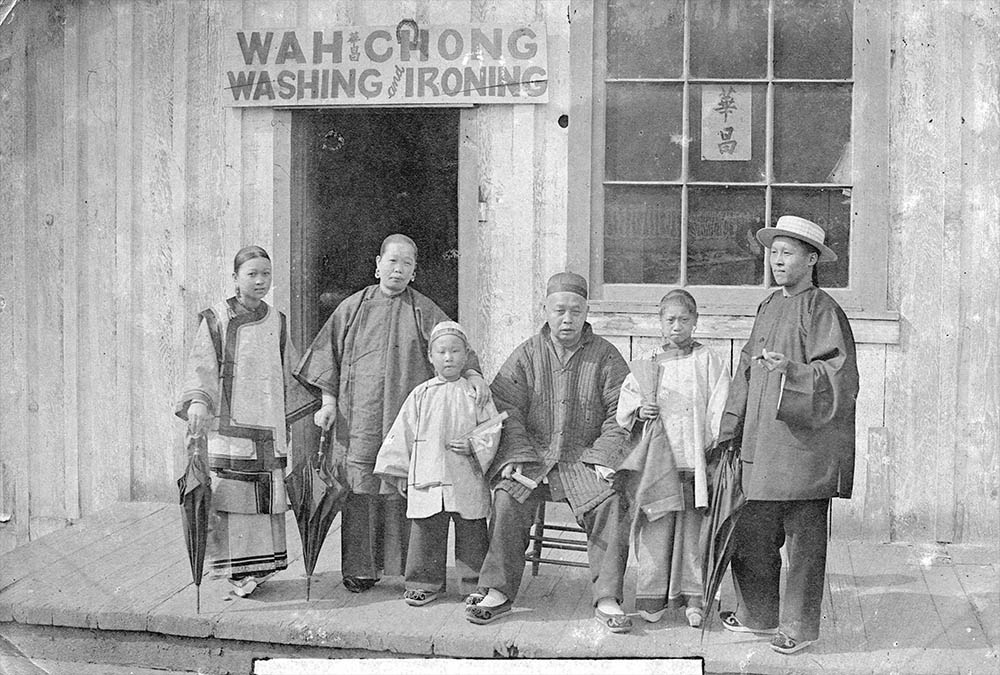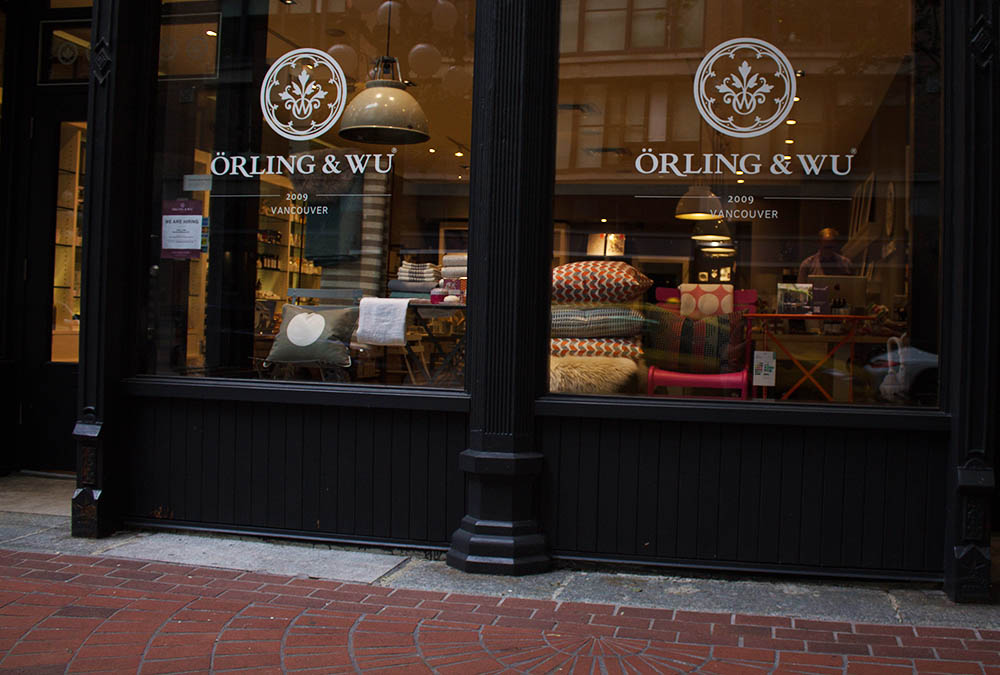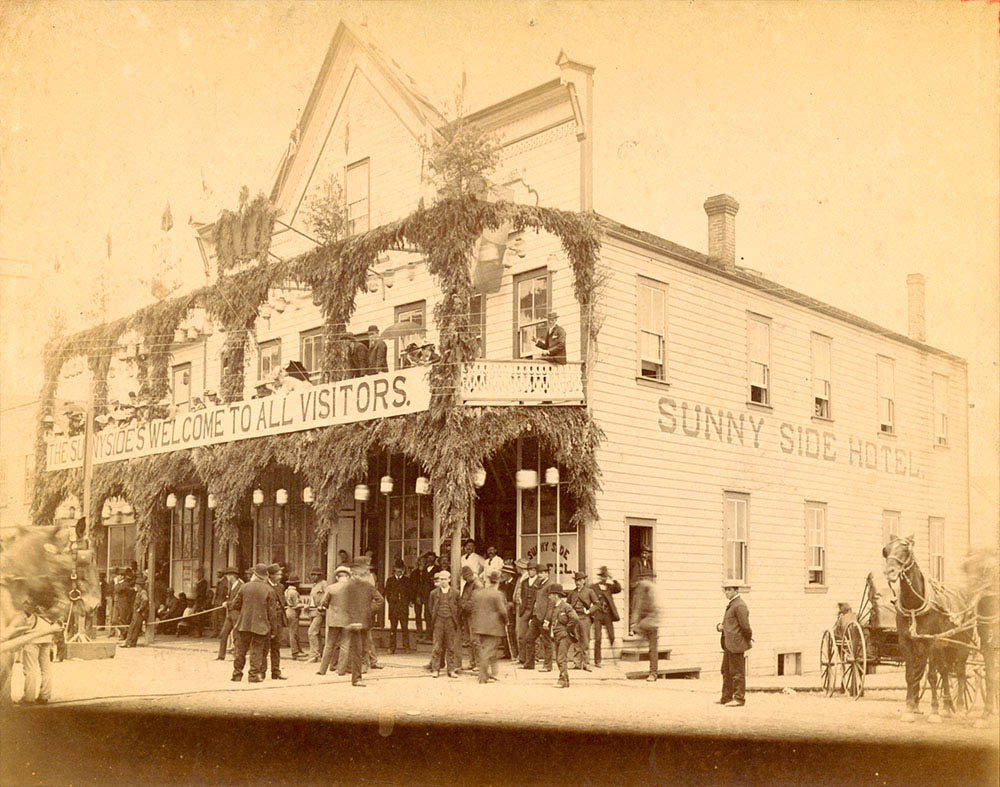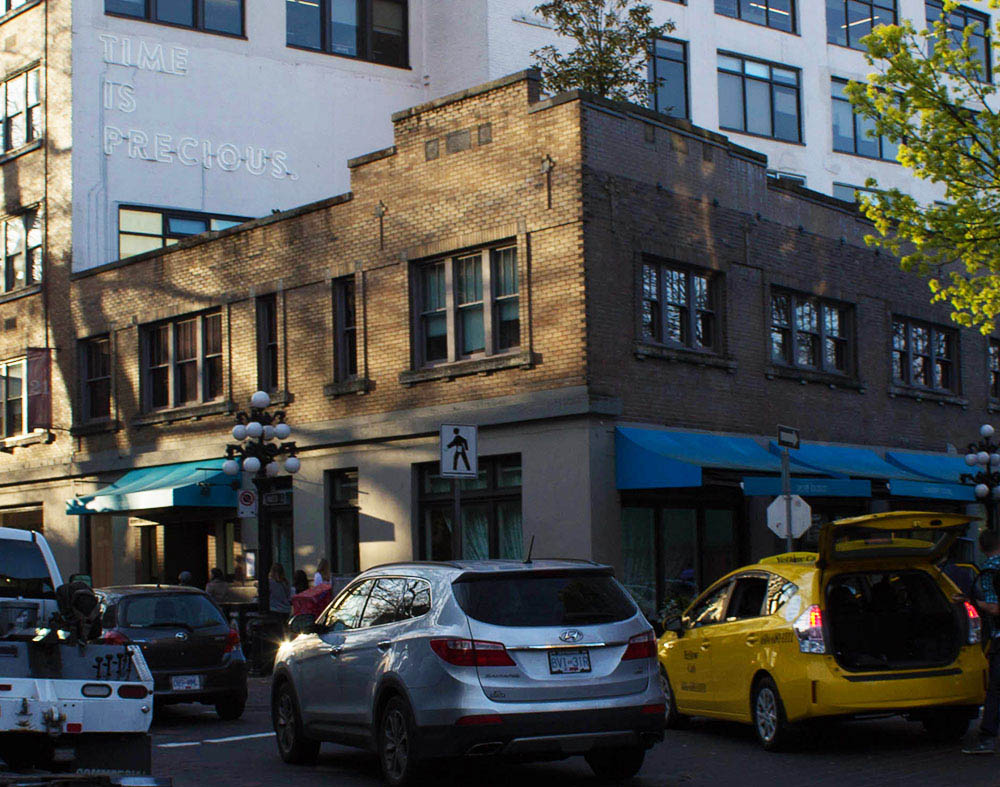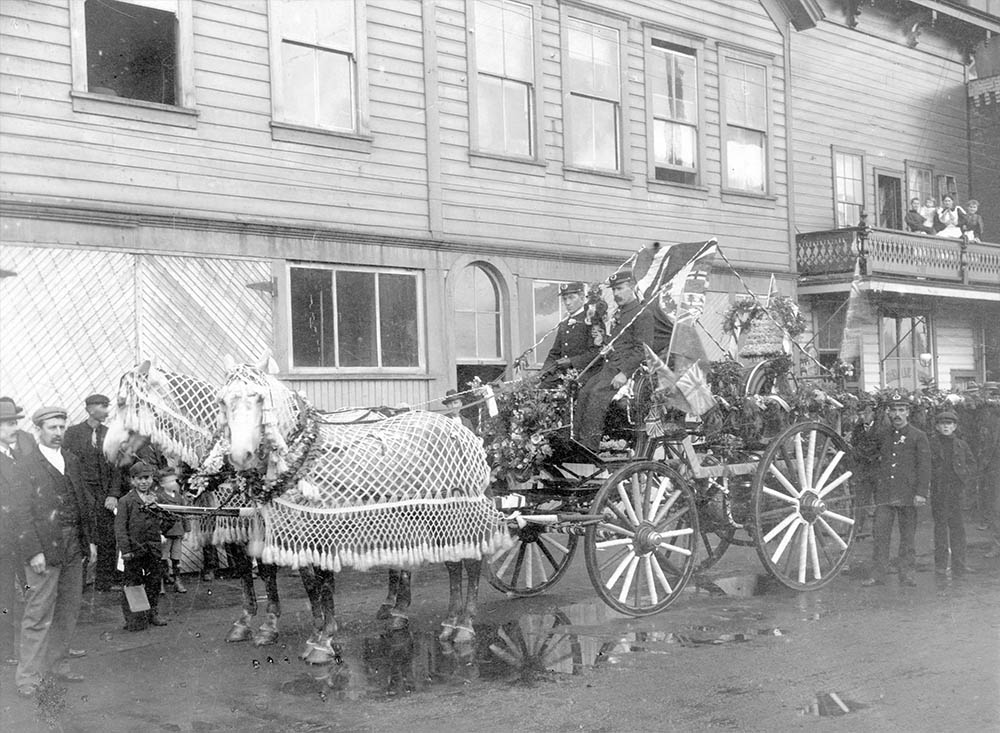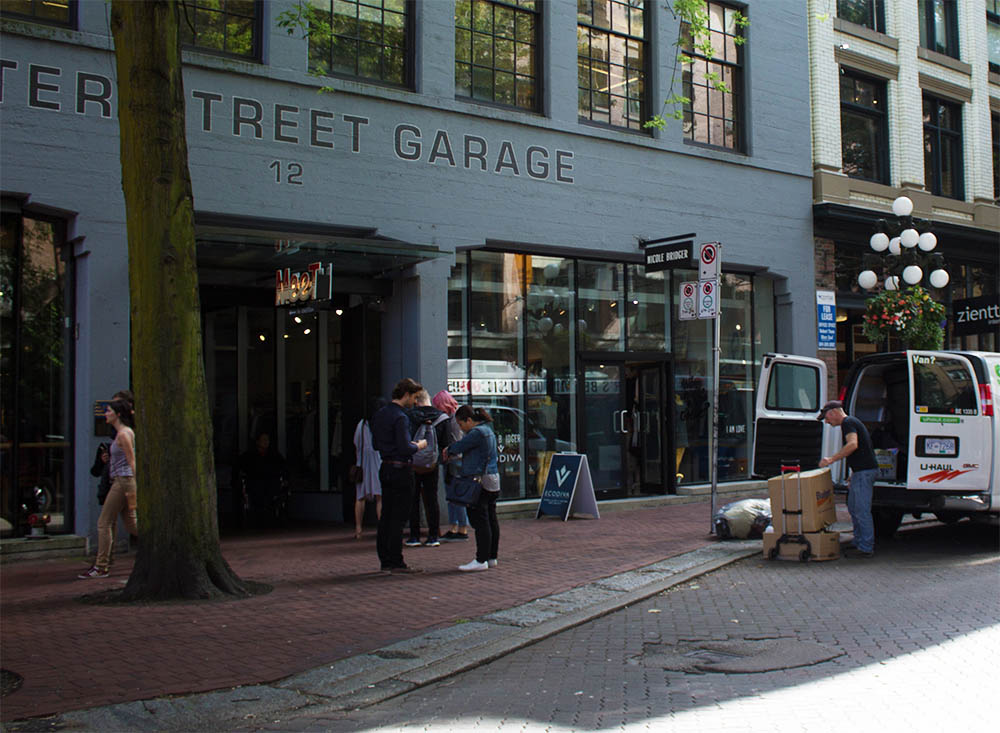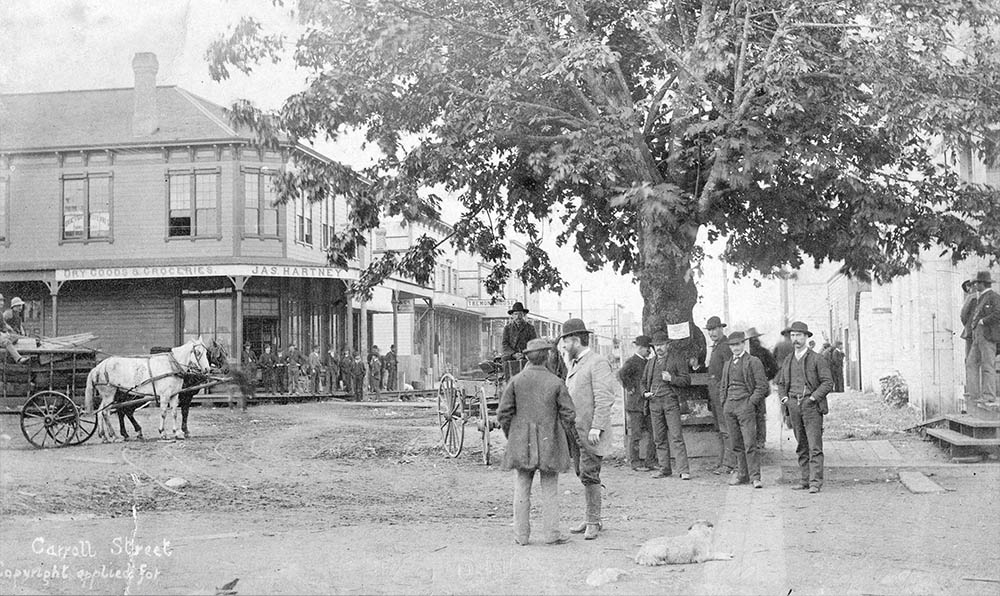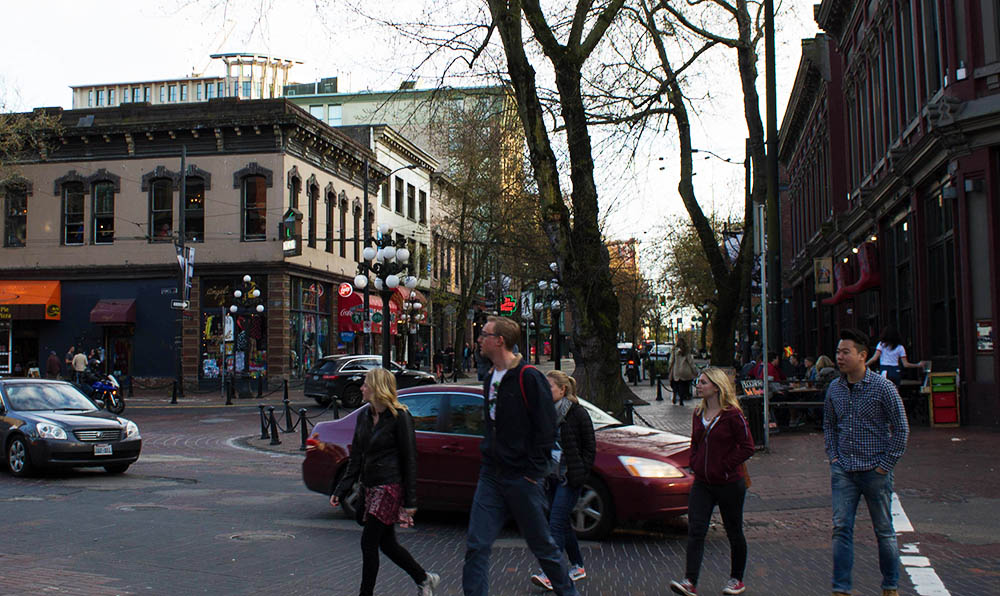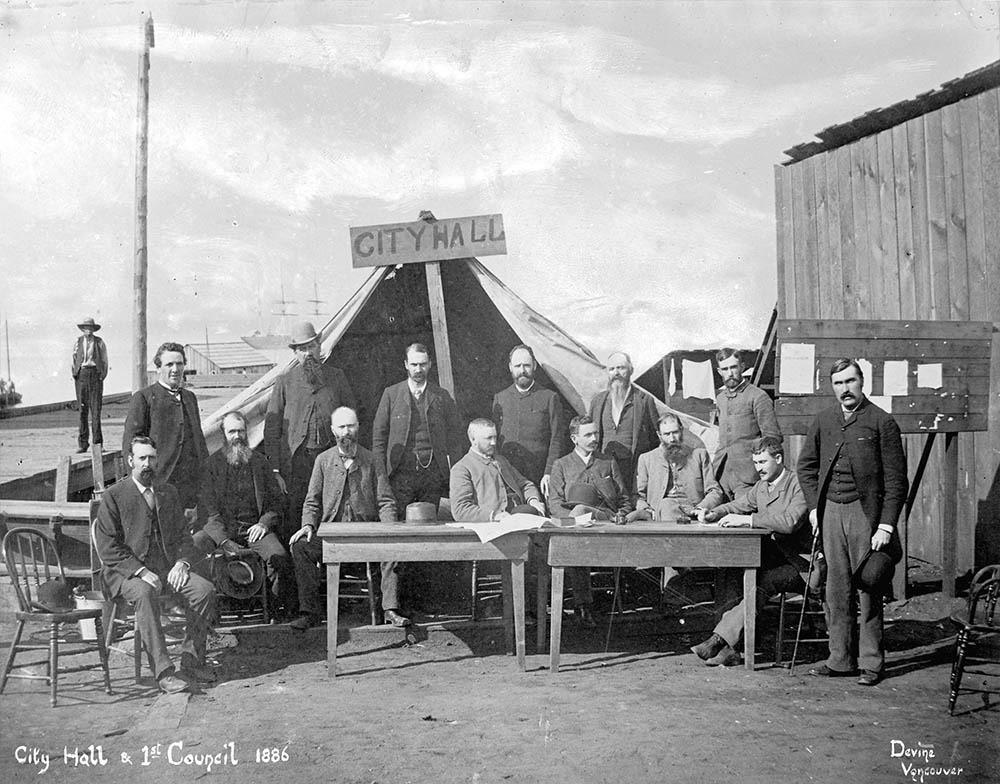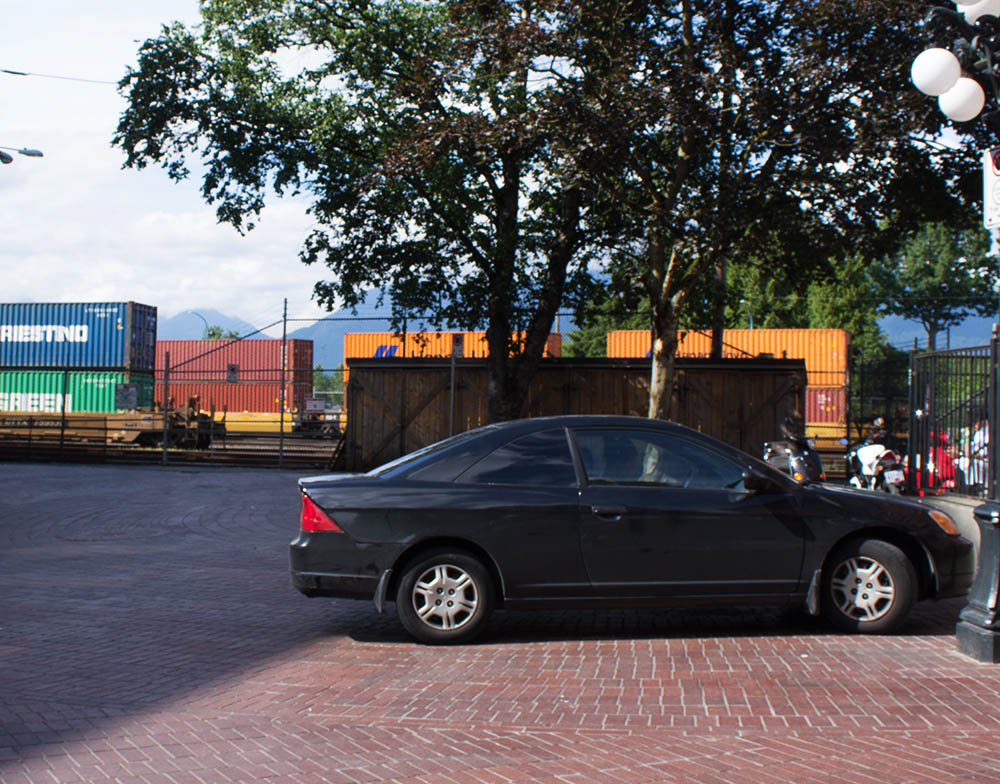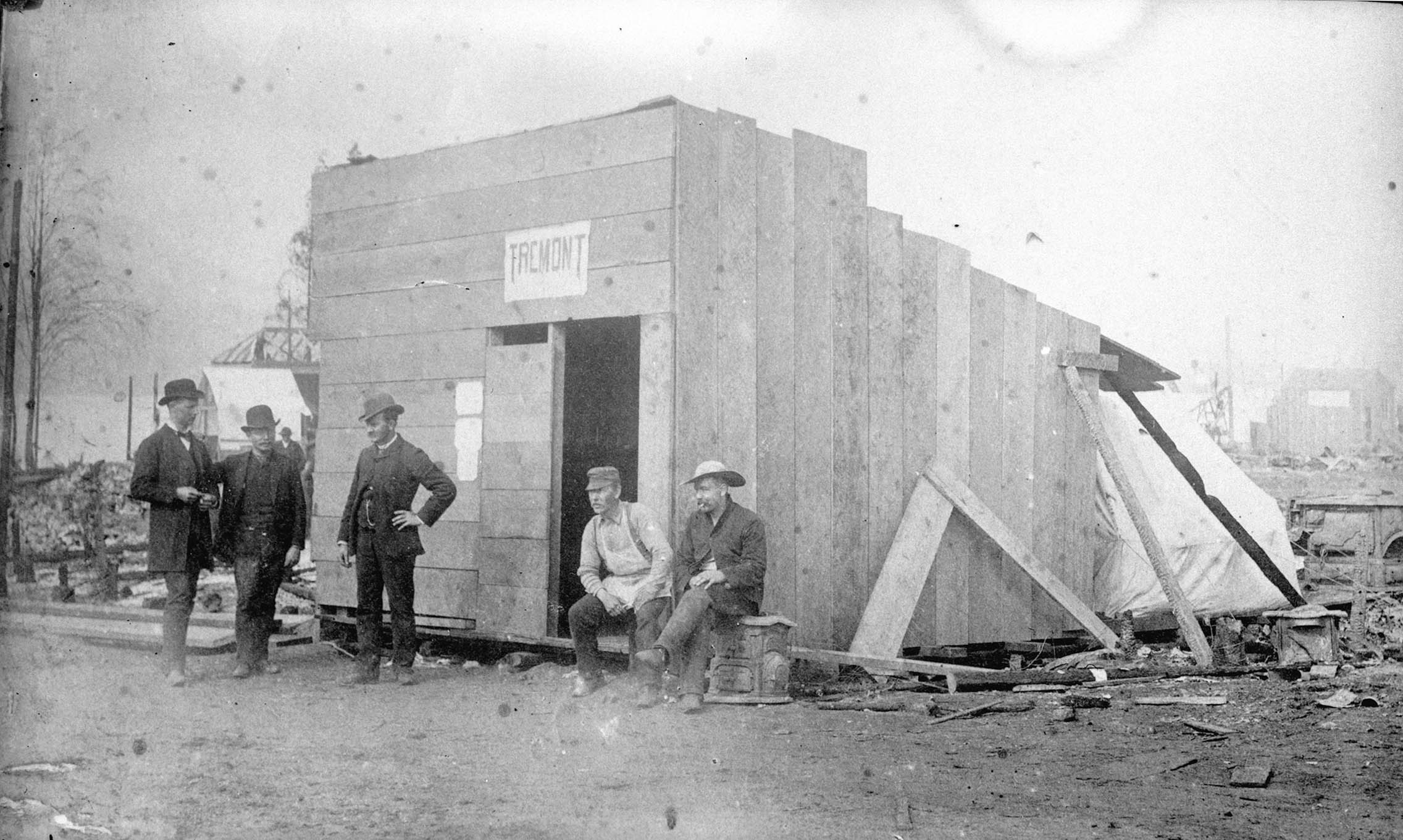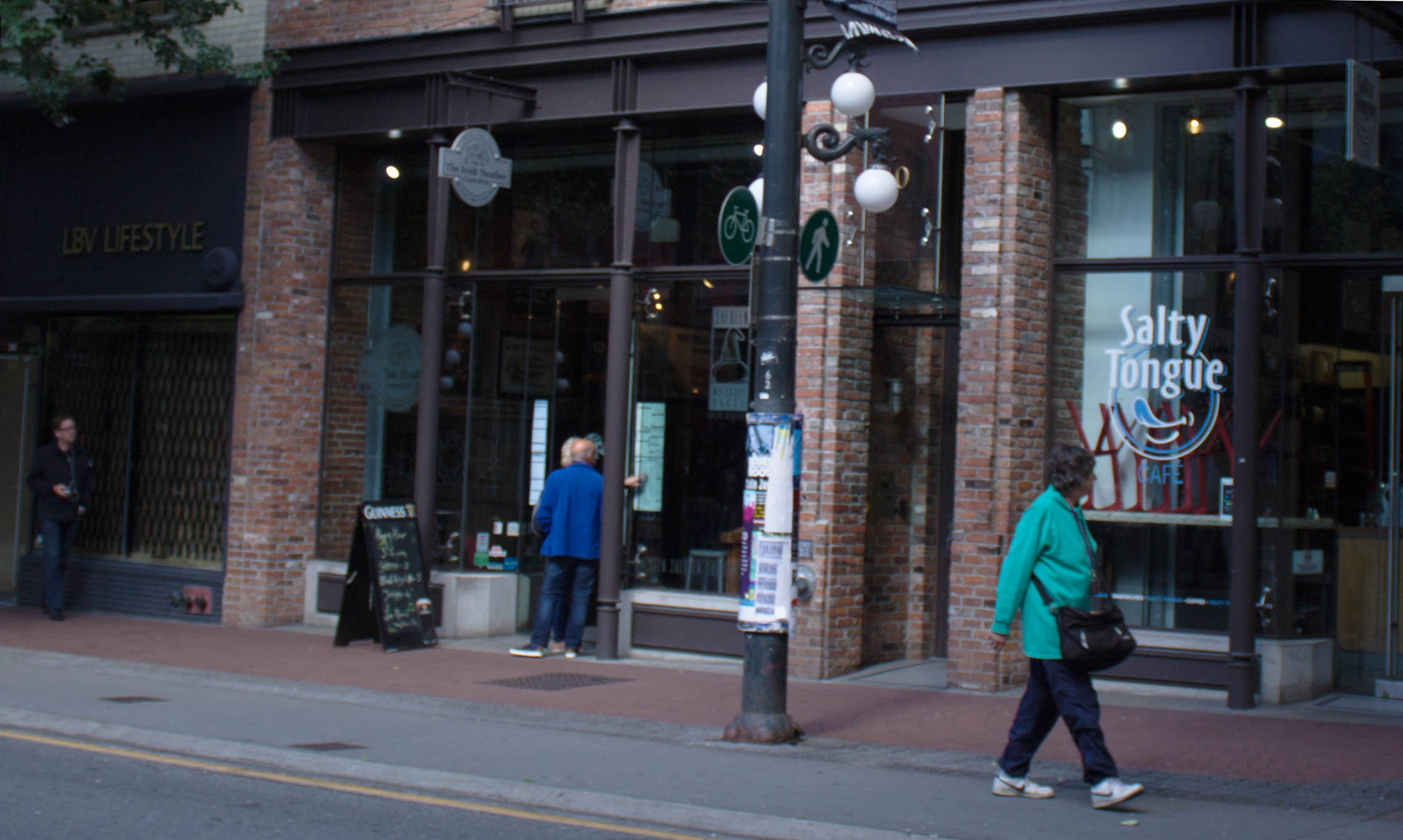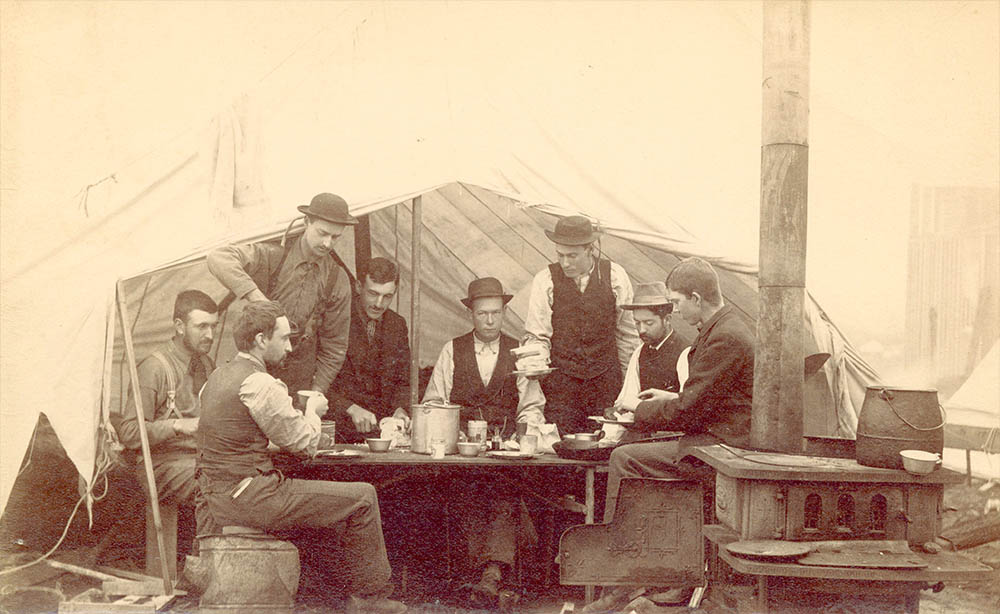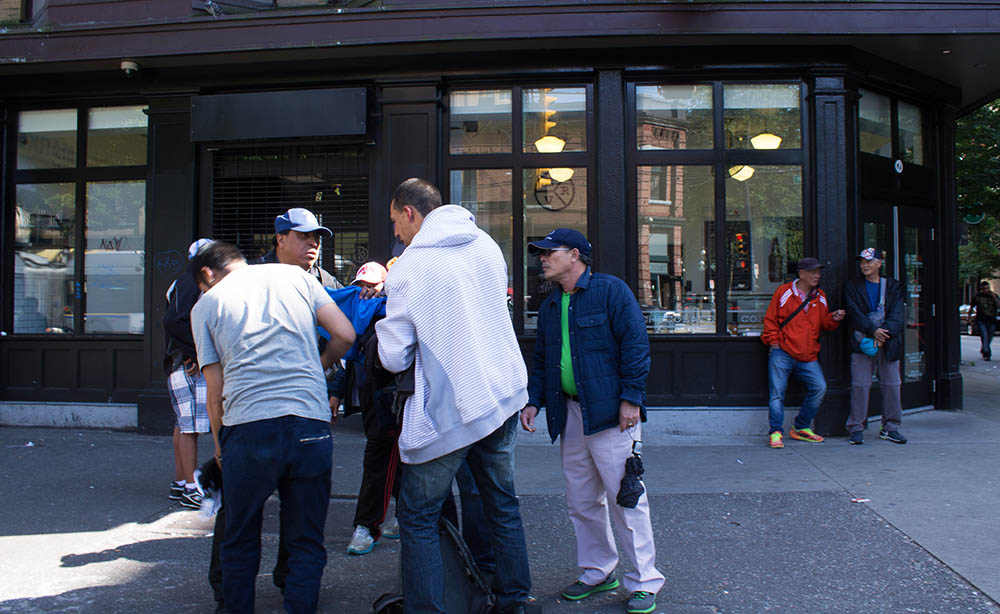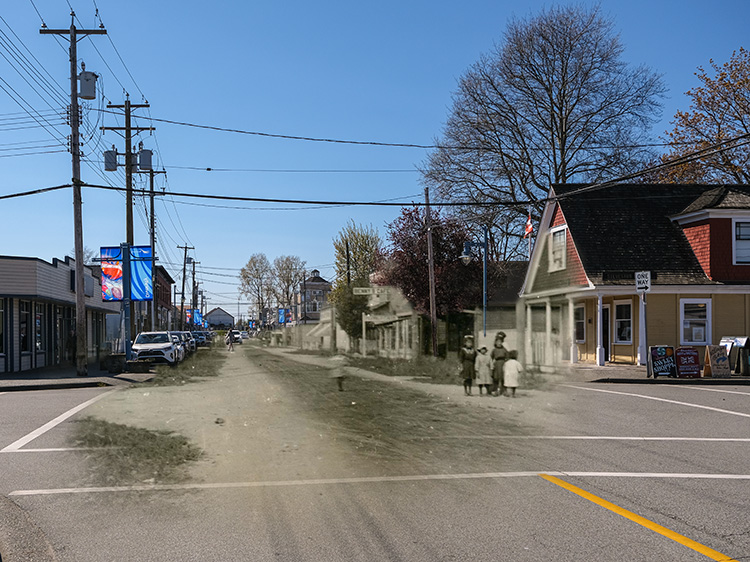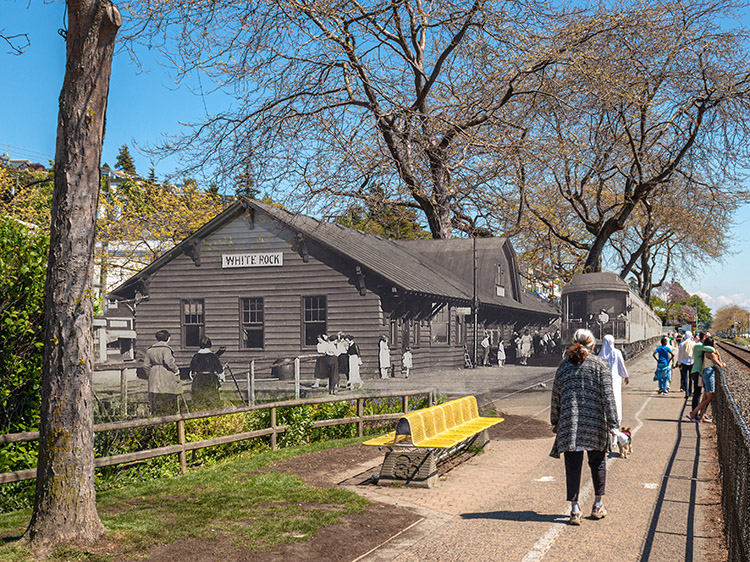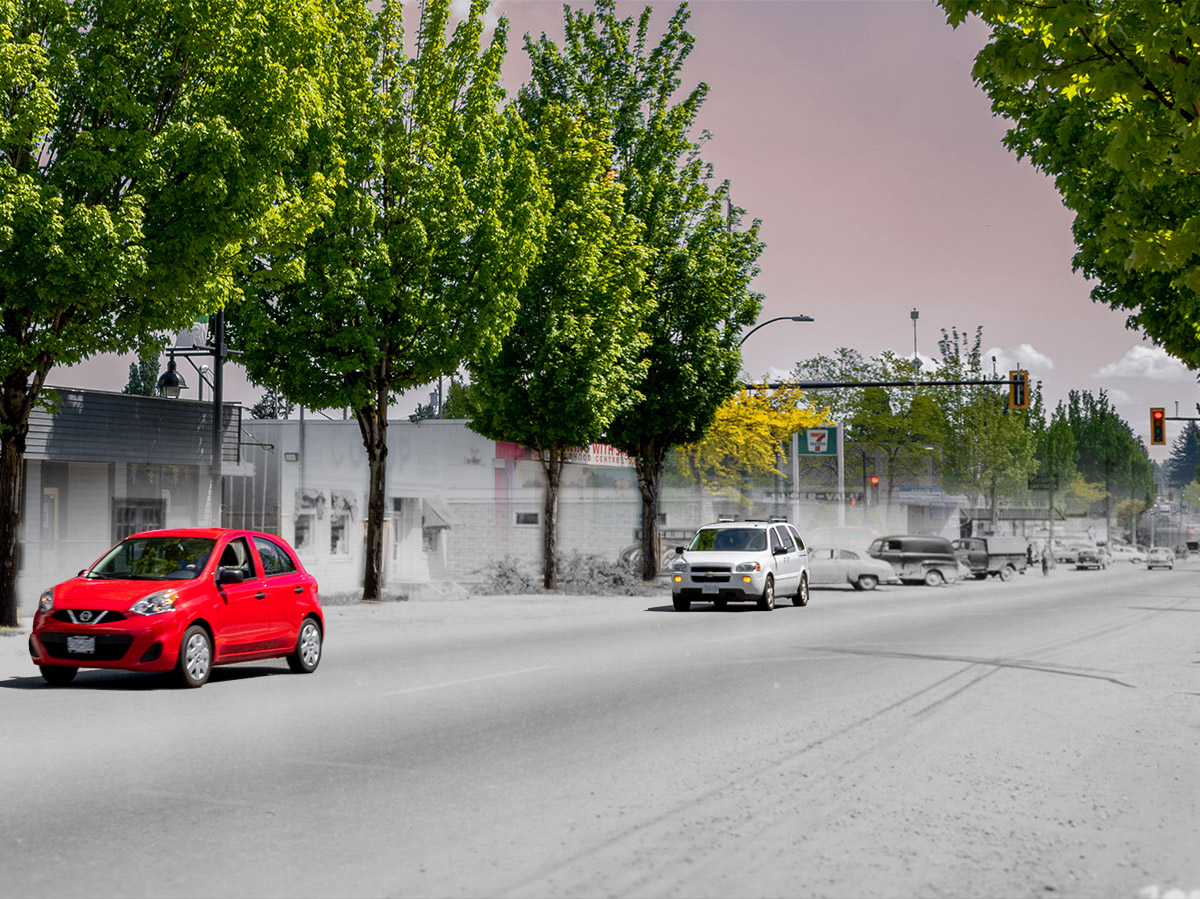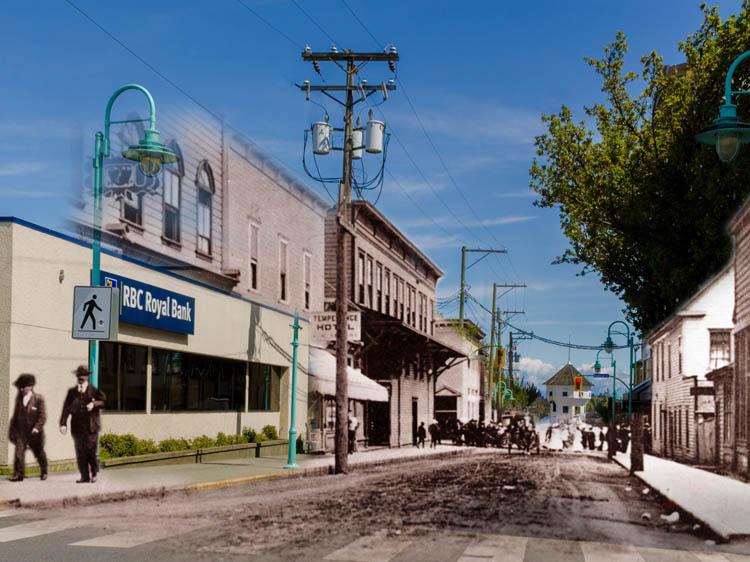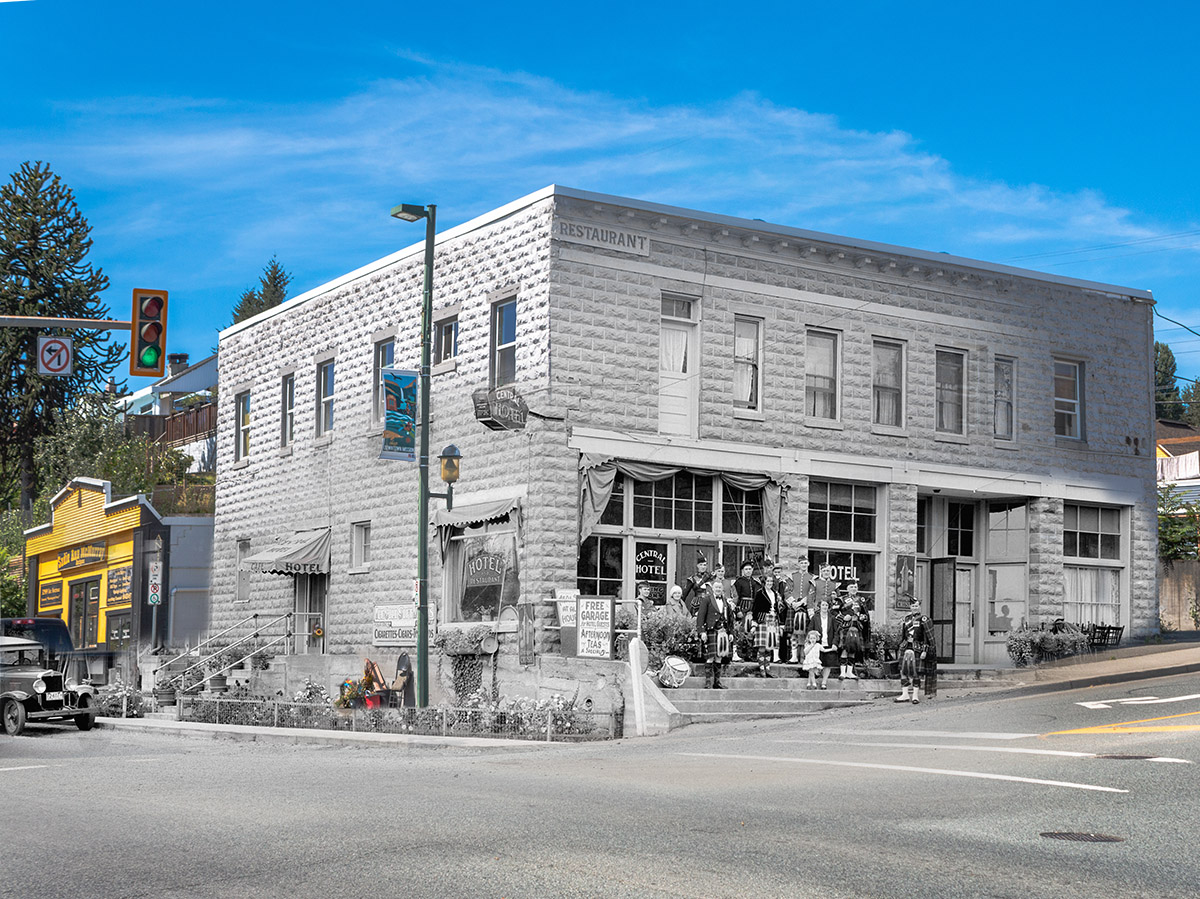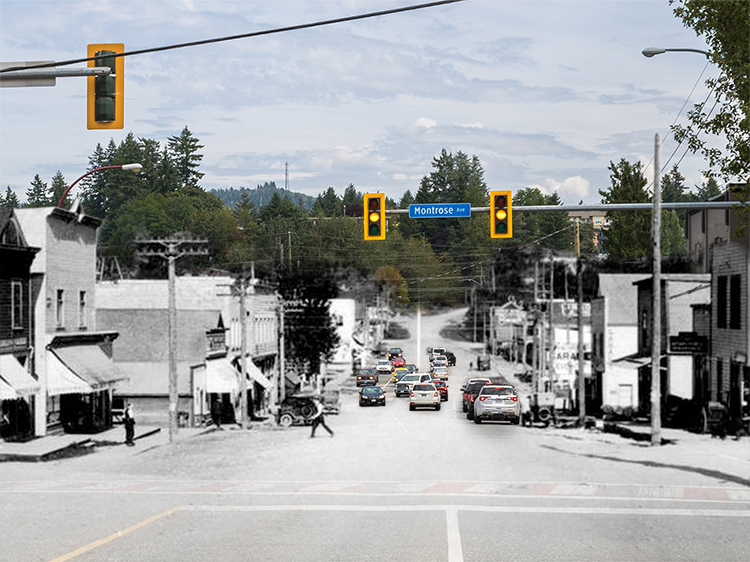Walking Tour
The Great Fire of Vancouver
When Vancouver was Destroyed
Andrew Farris
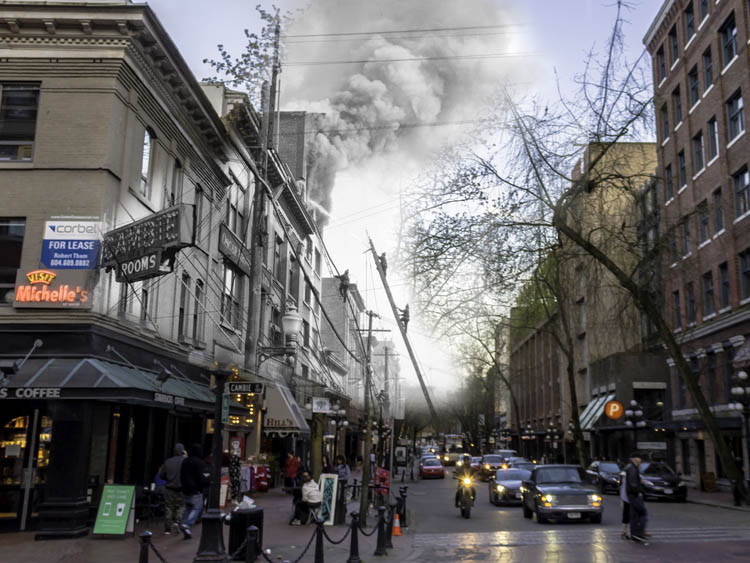
Vancouver Archives AM1535-: CVA 99-2452
On a quiet Sunday in June 1886, the newly-incorporated city of Vancouver was completely destroyed. A raging fire, whipped up by relentless winds and fueled by tinder-dry conditions, swept through the city, consuming all but a handful of buildings and killing some 28 people.
The dramatic opening chapter in Vancouver's history is often glossed over, but thanks to Lisa Anne Smith's recently published book, Vancouver is Ashes, that has changed. Her meticulous research allows us to pinpoint where individuals were on that day and follow in their footsteps as they fled the raging inferno.
In this tour we will follow in those footsteps. We'll learn about life in Vancouver's pioneer days, hear the harrowing tales of the people who lived through the fire, and see how Vancouver recovered and prospered, laying the groundwork for the city we know today.
This project is a partnership with the Downtown Vancouver Business Improvement Association.
1. Birth of a City
Vancouver Archives AM54-S4-: Str P241
1886
This fascinating photo shows Vancouver in early 1886, just before the Great Fire. It was taken at what would become the intersection of Hastings and Granville, though today there are some obstructions in the way. If you zoom in you can see almost the entire city at the time, back when Vancouver's population was about 3,000, not enough to fill a quarter of Rogers Arena. They were mostly lumberjacks, pioneers and frontiersmen following in the footsteps of "Gassy Jack", the barkeeper honoured as the unofficial founder of Vancouver.
* * *
John Deighton's nickname "Gassy" came from his talent for endlessly telling stories. Gassy Jack's eventful life meant he had no shortage of material to captivate his audience. Born in Yorkshire, England, Jack's adventures included captaining ships around the world, prospecting for gold in two gold rushes, winning a vast fortune and losing it in San Francisco's red light district, and opening the Globe Saloon pub in New Westminster. Going on vacation in 1867, he entrusted his beloved saloon to an American friend. Unfortunately, this his vacation coincided with the July 4 weekend, and when Jack returned he found that the Independence Day party had gotten out of control and his saloon had been destroyed.
So Jack got in a rowboat with his wife, and a barrel of whiskey, and rowed all the way around to Burrard Inlet. He spotted a beautiful patch of maple trees just west of the mill and determined that this was to be the sight of the second Globe Saloon. Calling the workers over from the mill, he declared that if they would build him a pub, they could drink as much whiskey as they could handle in a sitting. The thirsty men needed no encouragement: that very same day the new Globe Saloon was complete and open for business. The seed of Vancouver had been planted.1
2. Pushing Back the Forest
Vancouver Archives AM336-S3-2-: CVA 677-516
1868
Here we see loggers and a shabby log cabin at what would one day become the intersection of Granville and Hastings. If the 1868 date on the caption is correct, this may be one of the earliest photos ever taken of Vancouver. The entire region was once covered in a thick canopy of evergreen forest, amongst them some of the biggest trees in the world. The dangerous and demanding work of cutting them down consumed the energies of Vancouver's hardy inhabitants in these early years.
* * *
The loggers would find a particularly big tree and fell it in such a manner that it would knock down smaller trees on its way down, like felling a line of gargantuan living dominos. The branches would then be sawed off and dumped into piles of 'slash', like the one you can see in the foreground of the photo above. Some of these slash piles eventually stood three storeys tall.1
The trunks would then be fired down a skid that led to the water so they could be floated to the mill for harvesting. Logs this large were highly prized, especially for ship's masts. Some of the finest were shipped to Beijing to renovate the Forbidden Palace.
All the while a trickle of enterprising pioneers began to settle around Gassy Jack's saloon. Slowly the nucleus of a community took shape. In honour of Gassy Jack, the new inhabitants took to calling the place Gastown.
3. The Clearing Fires
Vancouver Archives AM54-S4-: Str P202
1886
This stunning photo was taken from about Hastings and Seymour, mere days before flames consumed the city. The clouds of smoke indicate the slash is being burned to clear the way for new buildings. On June 13, 1886, the great fire was sparked by a clearing fire near Cambie and Cordova, which can be seen on the right side of this photo. There's a good chance that the stumps and debris on the right are responsible for the fire that burned down Vancouver.
* * *
The new arrivals set to work clearing the debris left behind by the loggers: The piles of slash were burned, the tree stumps were filled with dynamite and blown up, and the ground was flattened out.
In those days the acrid clouds of smoke from the clearing fires constantly filled the city. For Vancouverites the smoky morning of June 13, 1886, was little different from any other. Crews worked diligently on two clearing fires, one at Cordova and Cambie and another near the Yaletown Roundhouse, gritting their teeth as a fierce south-westerly wind blew blinding, choking smoke into their faces. Equipped with pails of water, wet blankets and pick-axes, their job was to control the fire as it burned.
The Cambie and Cordova crew had to keep pulling more and more water from the pump at the nearby Regina Hotel as their fire grew bigger. You can see the Regina Hotel in the photo above, the taller three-storey building on the right side with the dark walls and light roof. As the wind began to blow harder the men began to get worried.
4. Losing Control
Vancouver Archives AM54-S4-: Dist P166
1886
This photo was taken just before the fire from the top of the so-called Granville bluff overlooking Burrard Inlet. It offers a striking clue about how a fire so easily could get out of control: Like a city under siege, Vancouver was surrounded by a thick cordon of extremely flammable dead brush. It seems just a little crazy the best solution to get rid of it was to burn it. On June 13, winds blew the clearing fire's sparks high into the air, causing dozens of little fires that exploded into life before the work crews could douse them. It took a mere 15 minutes for the fire to rage out of control.
* * *
The men at the bar, used to frequent fire alarms, murmured and returned to their pints uninterested. Only after intense pleading was Cary able to get a few of them to finish their beers, roll up their sleeves, and step outside. What they saw shocked them: A wall of flame towered over the edge of town and the work crew had hastily withdrawn from the leading edge of the fire. They were now frantically scraping a futile firebreak between the flames and the town. Others were atop the Regina Hotel covering it in a mosaic of wet blankets to protect it from sparks. The situation was quickly growing dire. As Cary and the men from the saloon sprinted back up the quiet street to help confront the city's impending doom, curious heads peeped out of doorways to see what all the ruckus was about.
5. Run for Your Lives!
Vancouver Archives AM54-S4-: Str P8
1886
A photo looking down Water Street in the weeks before the fire. Within minutes absolute bedlam had broken out on Water Street. People ran every which way, some banging on doors to warn anyone who had failed to hear the commotion outside, while others carried their possessions down to Burrard Inlet.
* * *
In those chaotic minutes as the city burned, Devine was unable to set up his bulky camera and take any photographs. After the flames had died down however, he was created an invaluable photographic record of this historic event. Just eleven days after the fire on June 24 he placed an ad in the Vancouver Daily News, which had remarkably succeeded in re-establishing itself only a few days after the fire. "Photographs of the City of Vancouver before and after the fire can be had at our tent on Cordova street."1
6. Saving his Photographs
Vancouver Archives AM54-S4-: Str N59
1887
This is a photo of Water Street after the fire when the city has begun to rebuild. As sparks from the Cordova and Cambie fire began showering on these tinder-dry rooftops, people were aghast to see another wall of flame advancing from the south: the Roundhouse clearing fire had gone out of control too and was racing towards the city. The two fires threatened to link up into a single monstrous conflagration. Those who saw it realized at that moment saving the city was a lost cause.
* * *
His shop was stocked at great expense with every sort of toiletry and medicine a person in 1886 could need. Fearing the imminent loss of his inventory, he hurriedly started gathering up all the bottles and boxes he could and lugged them down to the water's edge, just on the other side of Water Street. He did not have much time: the fire was coming fast.
7. Vancouver Burns
Vancouver Archives AM1376-: CVA 178-2.8
1895
Wah Chong and his family pose in front of their laundry business before the fire. This is roughly the right location, on the south side of Water between Carrall and Abbott. As the fire swept down Water Street it spared practically no buildings, consuming Wah Chong's Laundry and many other businesses asides. Each plank of the wooden sidewalks exploded into flames, the fire advancing faster than a man could run.1 Hundreds of people dashed across the street, seeking refuge in Burrard Inlet as their homes and businesses burst into flame.
* * *
The first issue of the Vancouver Daily News published after the fire described the scene at Hastings Mill:
"On the steamers and wharves, while the city was a mass of roaring flames, where gathered hundreds of frightened and excited men and sobbing women and children. Anon, there emerged from the dense smoke one and another, GASPING AND BLINDED, with singed hair and blistered hands and faces, who had struggled almost too long to save property…"2
8. A Close Shave
Vancouver Archives AM54-S4-: Hot P7
1887
The Sunnyside Hotel, seen rebuilt just after the fire. The hotel was one of the most important buildings in Vancouver at the time; Mayor McLean had just given his election night victory speech from the balcony a couple weeks before the fire. By the time many inside were aware of the fire it was already on top of them. Some made harrowing escapes as flames licked at their heels.
* * *
Campbell wasted no time. He ran to his wagon and hitched up his horse, covering its eyes to keep it from seeing the terrifying flames and bolting. Together they galloped up to Water Street to Scoullar's and loaded up as many crates of dynamite as they could fit. Hopping back on the wagon, Campbell ushered his blinded horse down the chaotic street, swerving crazily to avoid hitting panicked people running every which way. All the time showers of sparks rained down on him and his volatile cargo.
Vancouver's surgeon Dr. McGuigan had ignored all the shouting and settled down in the Sunnyside Hotel for a relaxing Sunday nap. Suddenly his friend John Blake burst into the room: "What in the world are you doing! The town is burning down all around us! The roof next door is on fire! Get your stuff packed as quickly as you can or you'll be burned right here with your boots on!"2
McGuigan blinked disbelievingly at Blake for a moment and was about to open his mouth to say something when, as if in answer to his question, the roof suddenly caved in and flames burst through the ceiling, showering the two in sparks and burning splinters. McGuigan was now fully awake and leapt to his feet. Making for the exit, he ran for his office to grab his doctor's instruments—they were sure to come in useful in the days ahead.
9. Firefighting
Vancouver Archives AM54-S4-: FD P45
1897
Fire Hall No. 1, seen here, was built just after the fire. In this photo their horse-drawn pump wagon has been decked out for a patriotic event. As the fire spread through the city the barely-equipped volunteer firefighters were all but powerless to intervene. They would learn a hard lesson that day and forever after Vancouver would take firefighting with grave seriousness.
* * *
After the fire Vancouver took firefighting much more seriously. A stringent fire code was implemented, the latest fire engines were acquired and the fire crews were trained to an impressive degree of efficiency. Before World War I, an international commission ranked Vancouver's fire department the third best in the world, after London in England, and Leipzig in Germany.1
On this windy day in June however, the volunteer firefighters were no better equipped to save the city than any random bystander.
10. Maple Tree Square
Vancouver Archives AM54-S4-: Str P83
1886
This photo from just one week before the fire shows the maple tree that gave Maple Tree Square its name. Just visible at right is Deighton House, the hotel Gassy Jack had built before his death in 1875, a successor to his ground-breaking Globe Saloon. People watched helplessly from ships, the shallows, and Hastings Mill as the fire swept through the heart of the city. Everything in this photo was burned, including the maple tree.
* * *
11. The Aftermath
Vancouver Archives AM54-S4-: LGN 1045
1886
Once the fire had run its course, the dazed survivors looked across a city that, save a scattered handful of buildings, had been completely razed. Yet they were not alone to deal with this catastrophe. The communities of coastal British Columbia banded together to mount a huge relief effort for the newly-made refugees of Vancouver. Mayor MacLean had a tent set up on this spot at the foot of Carrall Street from which he could direct recovery efforts. This famous photo, posed by the photographer Devine a couple months later, shows the mayor (sitting at middle) and his staff.
* * *
New Westminster was connected to Vancouver by a long, rutted road, today's Kingsway. That city's inhabitants, learning of the fire via telegraph, immediately set about filling wagons of relief supplies, including food, clothing, and tents for shelter, and dispatched them to the burning city. The supplies would arrive just before nightfall, a gratefully welcomed succour for the Vancouver's homeless citizens.
In the days that followed steamers from Nanaimo, Victoria and even the United States poured into the harbour loaded with supplies. People all along the West Coast came to Vancouver's aid, a kindness that would not soon be forgotten by the city's beleaguered inhabitants.
12. Rebuilding
Vancouver Archives AM54-S4-: SGN 123
1886
Rebuilding started within hours. The Hastings Mill, whose plentiful timber stocks had survived the fire, handed out lumber for free to any Vancouverite looking to rebuild. One of the first businesses to go back up was the Tremont Hotel, seen here. It was erected on the smouldering ashes of the old Tremont Hotel, which you can actually see in the previous photo of Maple Tree Square. It isn't much, but it gave exhausted people a place to have a warm meal and a cold beer out of the blazing hot sun.
* * *
In response a relief fund was immediately established and succeeded in raising thousands of dollars within days. Help came too from the CPR, which donated $3,000 to reconstruction.
Hours after the fire Mayor MacLean sent a telegram to Prime Minister John A. MacDonald pleading for aid. "Our city is ashes," it read. "Three thousand people homeless. Can you send us any government aid?"1
To our modern eyes it is almost shocking that the prime minister did not immediately reply. The mayor sent another telegram, and then another. Finally, eleven days later, the mayor received a short telegram from Ottawa, announcing a contribution of $5,000. It's a reminder of how much less responsibility the federal government felt it owed to its citizens 130 years ago.2
13. Vancouver is Ashes
Vancouver Archives AM54-S4-: GF P8
1886
Though their city had been destroyed, the boundless optimism of Vancouverites remained undimmed. We see here eight men taking breakfast and coffee in one of the temporary tents erected in the days after the fire. The photo's caption says this was taken at the southeast corner of Hastings and Cordova. They appear remarkably well-kempt and composed, determined to get on with the work of rebuilding. In such hands the city's future was secure.
* * *
"Probably never since the days of Pompeii and Herculaneum was a town WIPED OUT OF EXISTENCE so completely and suddenly as was Vancouver on Sunday…
"Like nearly all others who had started business in the new city, however, we perceive that the fire, whatever may be its effect upon individuals, is to the city as a whole not a very serious matter, in fact it can scarcely impede the progress of Vancouver at all. A few months, or even a few weeks, will restore the city to as good a basis as it was on before the fire. "
Endnotes
1. Birth of a City
1. Bannerman, Gary. Gastown: The 107 years. 1974. P. 12.
2. Pushing Back the Forest
1. Smith, Lisa A. Vancouver is Ashes: The Great Fire of 1886. Vancouver: Ronsdale Press, 2014. P. 5.
3. The Clearing Fires
1. Macdonald, Norbert. "A Critical Growth Cycle for Vancouver, 1900-1914." BC Studies. No. 17, Spring 1975, 26-42. P. 26.
2. Donaldson, Jesse. "Land of Destiny." The Dependent Magazine. 18 Jan. 2012. Online.
4. Losing Control
1. Smith, 13,
5. Run for Your Lives!
2. Smith, 118.
7. Vancouver Burns
1. Davis, Chuck. The Chuck Davis History of Metropolitan Vancouver. Vancouver: Coastal Publishing, 2011.
2. Smith, 118.
8. A Close Shave
1. Davis.
2. Smith, 37.
9. Firefighting
1. Davis.
12. Rebuilding
1. Smith, 72.
2. Smith, 105.
Bibliography
Bibliography
Bannerman, Gary. Gastown: The 107 years. 1974
Davis, Chuck. The Chuck Davis History of Metropolitan Vancouver. Vancouver: Coastal Publishing, 2011.
Donaldson, Jesse. "Land of Destiny." The Dependent Magazine. 18 Jan. 2012. Online.
Macdonald, Norbert. "A Critical Growth Cycle for Vancouver, 1900-1914." BC Studies. No. 17, Spring 1975, 26-42.
Smith, Lisa A. Vancouver is Ashes: The Great Fire of 1886. Vancouver: Ronsdale Press, 2014.




